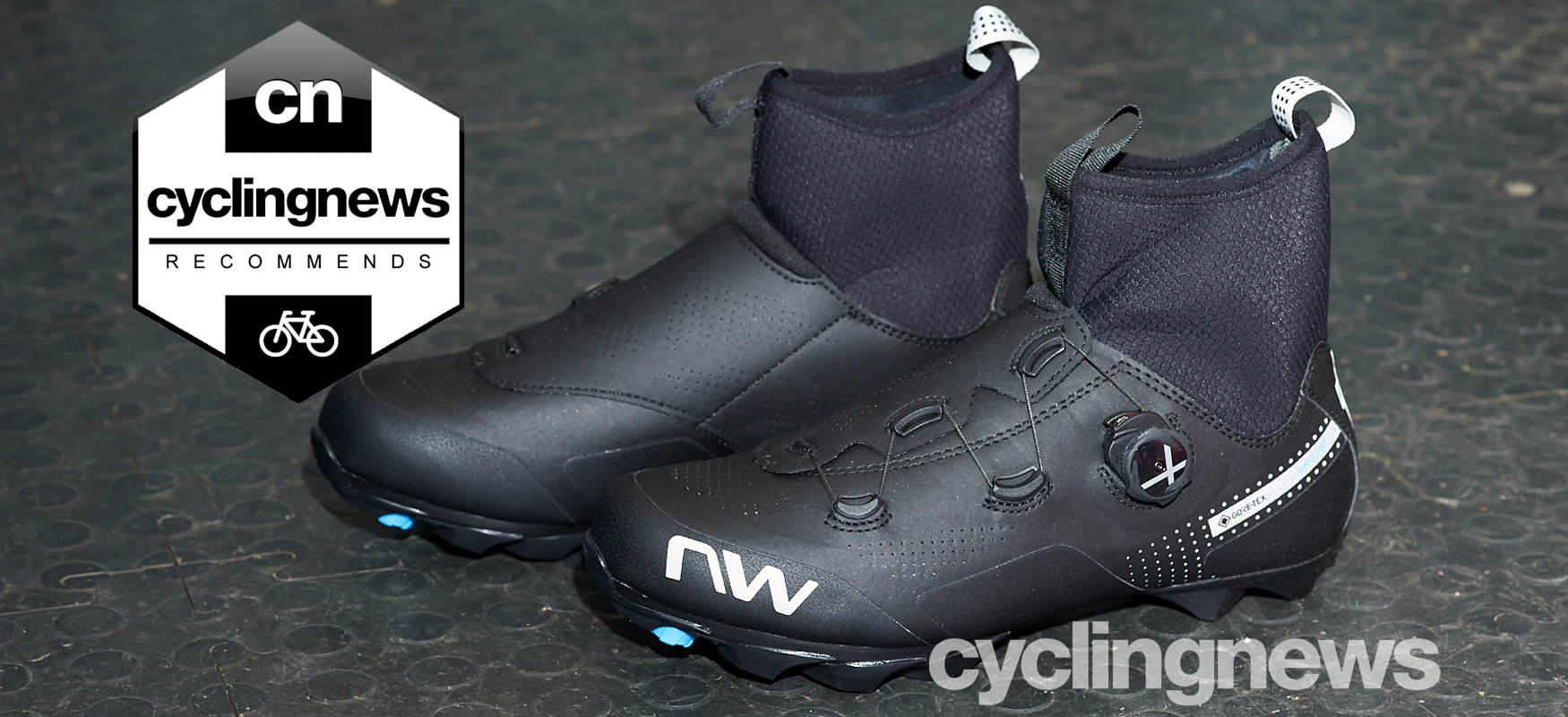Cyclingnews Verdict
The Northwave Celsius XC Arctic GTX is warm, versatile and effective on the bike, with a grippy sole and good additional protection
Pros
- +
Plush, fleece-lined shoe
- +
Simple, effective fastening and on-the-fly adjustment
- +
Aggressively grippy sole and stud or spike options
Cons
- -
Ankle cuff doesn’t seal completely
- -
A little harder to remove than some alternatives
- -
Ankle collar is harder to clean than the uppers
You can trust Cyclingnews
These Northwave Celsius XC Arctic GTX winter boots are almost identical to the Celsius R Arctic GTX road version, except for the addition of off-road-friendly elements on the sole, and some additional protection. As in most instances, XC stands for 'cross country', and pertains to the off-road nature of this particular shoe, making them suitable for gravel and mountain bike adventures, as well as commuters who want a little extra ruggedness in their winter shoes' construction.
We gave the road-going pair a middling 3.5 stars when we reviewed them recently, but how does the XC version compare to the best winter cycling shoes on the market?
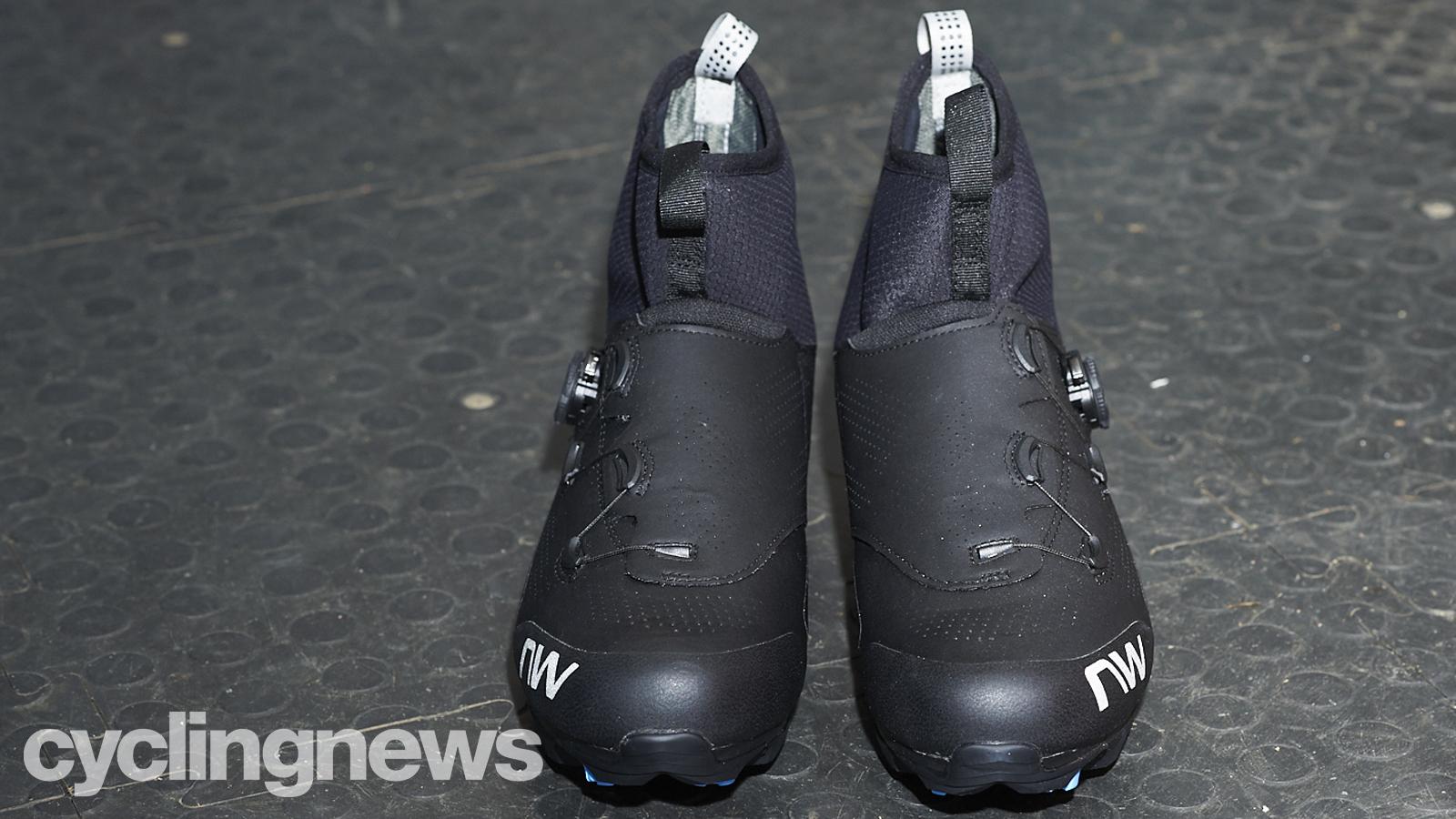
Construction
The Arctic GTX uppers are constructed from a waterproof microfibre material, which forms a conventional shoe-like profile. An extended ankle collar rises from it, and continues internally to just behind the toe box, acting as a tongue, and this is covered by the overlapping inner flap of the upper.
Made from Neoprene and a Gore-Tex Rattler membrane, Northwave’s Easyfit Climaflex collar covers the ankle to a reasonable height, and includes well-anchored finger loops at the front and rear to make it easier to pull on. It has a fixed aperture, but does have a limited amount of stretch, feels soft and is very flexible.
The microfibre uppers are completely lined with a deep, shaggy fleece fabric that can’t fail to retain warmth. Arctic 4layer insoles have a perforated EVA base topped with a heat-reflecting foil layer and microfleece surface.
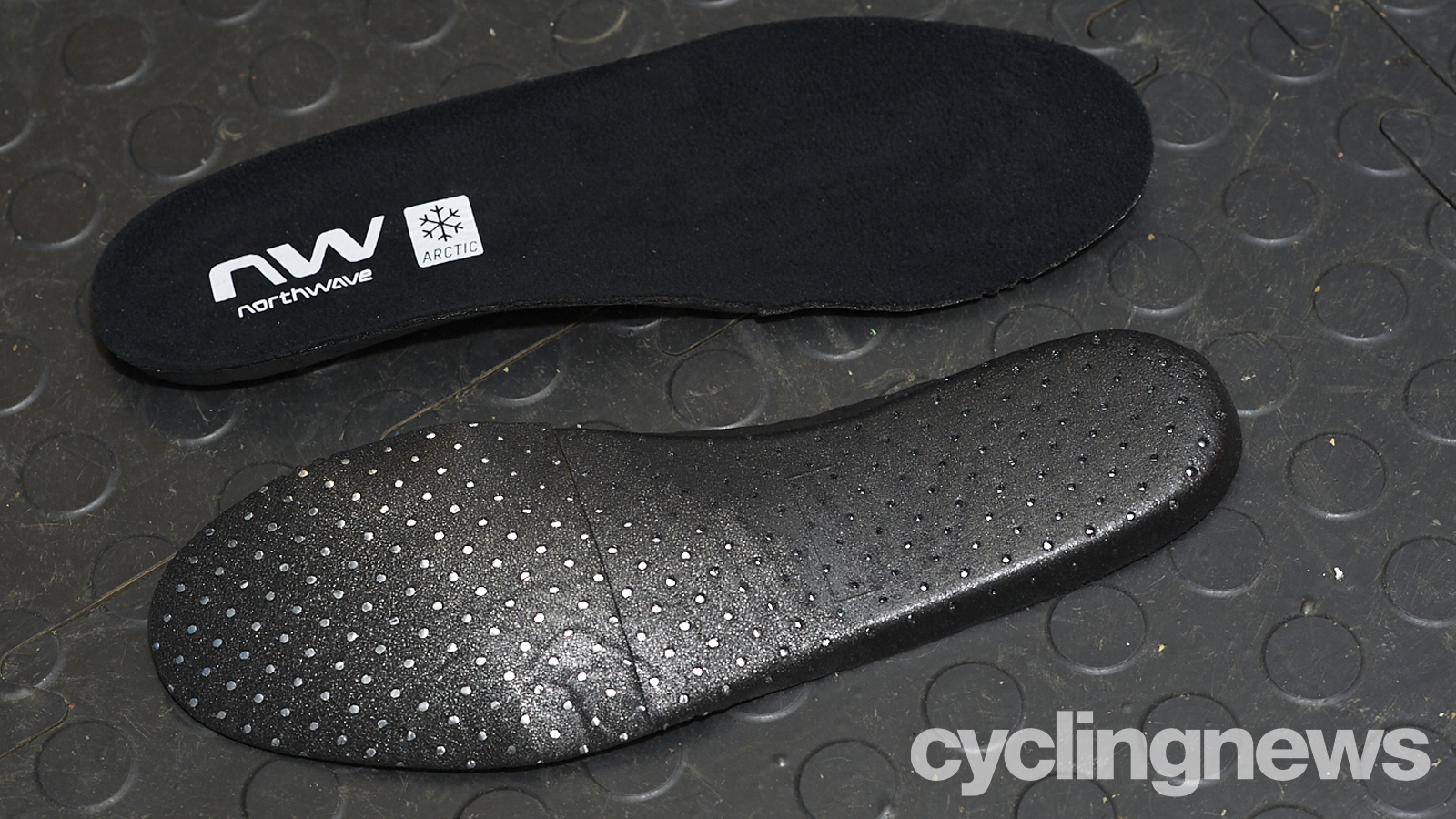
Hundreds of tiny pinprick perforations on the front and sides aid the boot’s breathability, and the lower microfibre is mostly protected by added TPU panels. These slightly reduce the amount of reflective material present, but there’s still a generous amount, which features on all sides. As on the road version, the single SLW2 (Speed Lace Winch) dial is positioned on the outside of each boot, with its lengthy lace crossing the shoe’s opening five times between its toe box anchor and the dial.
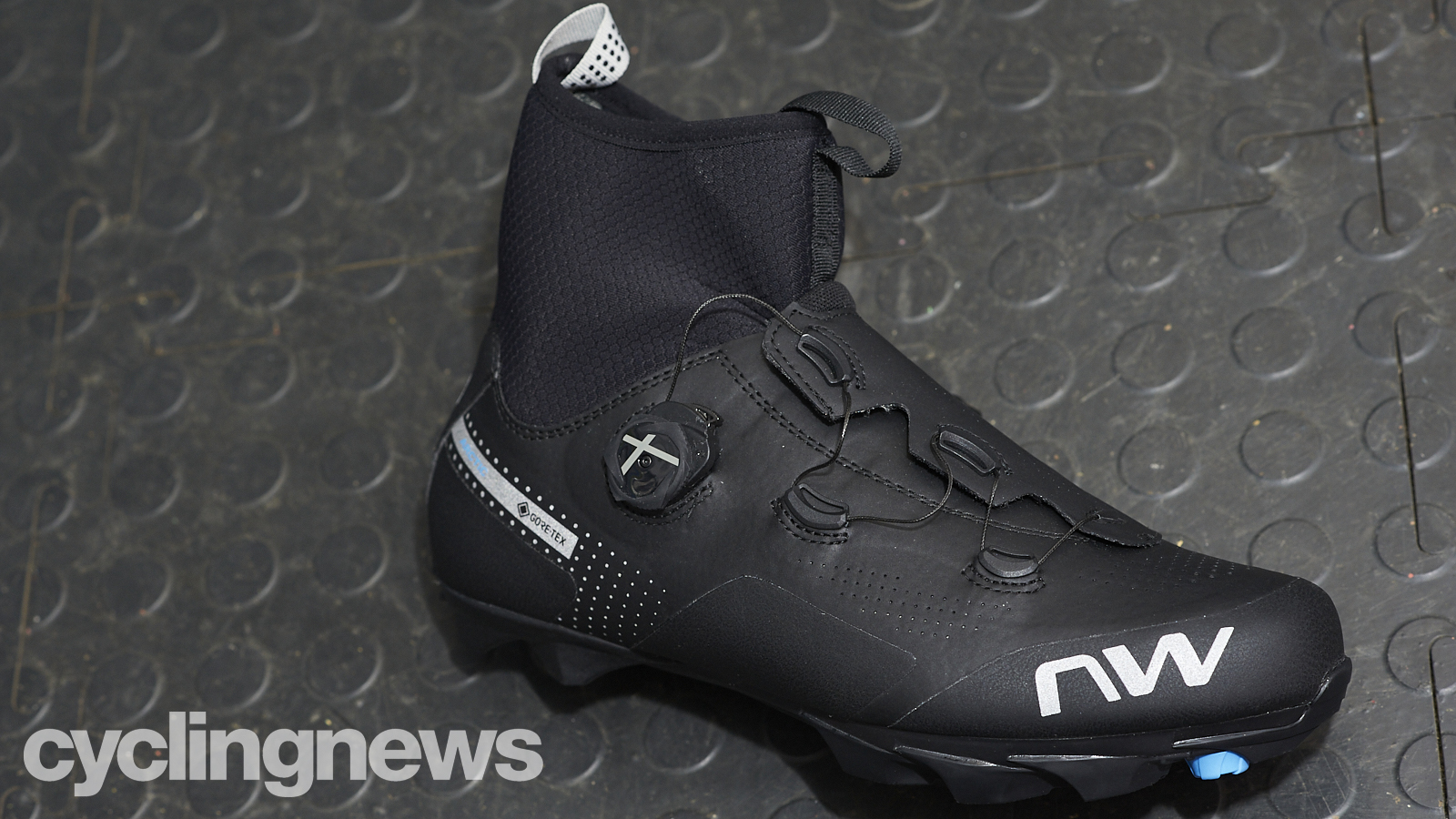
Northwave’s Jaws Carbon Reinforced sole registers 'eight' on the company’s proprietary stiffness index, and has an aggressive rubber tread pattern, plus a standard two-bolt off-road cleat fitting. The addition of the rubber sole in particular increases the weight of the Celsius XC Arctic GTX over that of its road cousin by 182g, giving a total of 931g for a pair of size 45s.
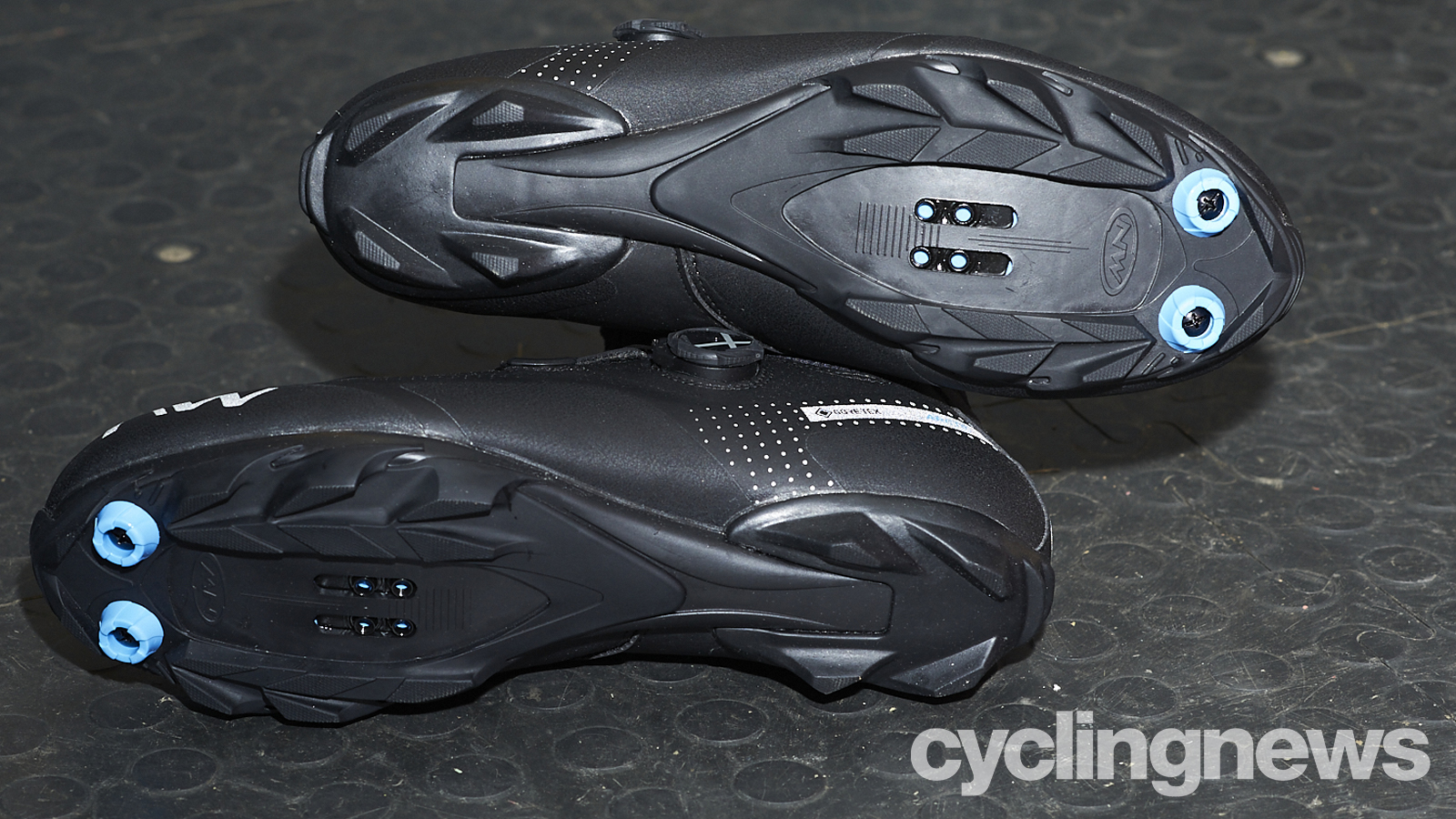
Fit
Northwave’s winter boots offer a much more generous fit than their shoes, which have themselves become a realistic option for riders with feet a little wider than average. I’d place myself in that category, and over the last few years have found Northwave’s road shoes to fit well.
With their increased volume to cater for thicker winter socks, the Celsius XC Arctic GTX boots have heaps of room. I’m sure I could wear my very thickest socks, or two pairs of my usual winter Merino socks, and still not feel cramped. I wouldn’t, because firstly, I’ve never thought these boots needed to be warmer, and secondly because an extra pair of socks might be a bit tight, and reduce circulation.
Pulling the Northwaves on still needs a little foot and ankle dexterity – inserting your foot at 90 degrees, and rotating it into the boot while firmly pulling up on both loops – but there’s little that can go wrong. You’re either in or you’re not, as there’s no tongue to snag or overlapping outer layers to position. Once your heel slips into the thermoformed heel counter, just wind up the SLW2 dial until secure, and you’re done.
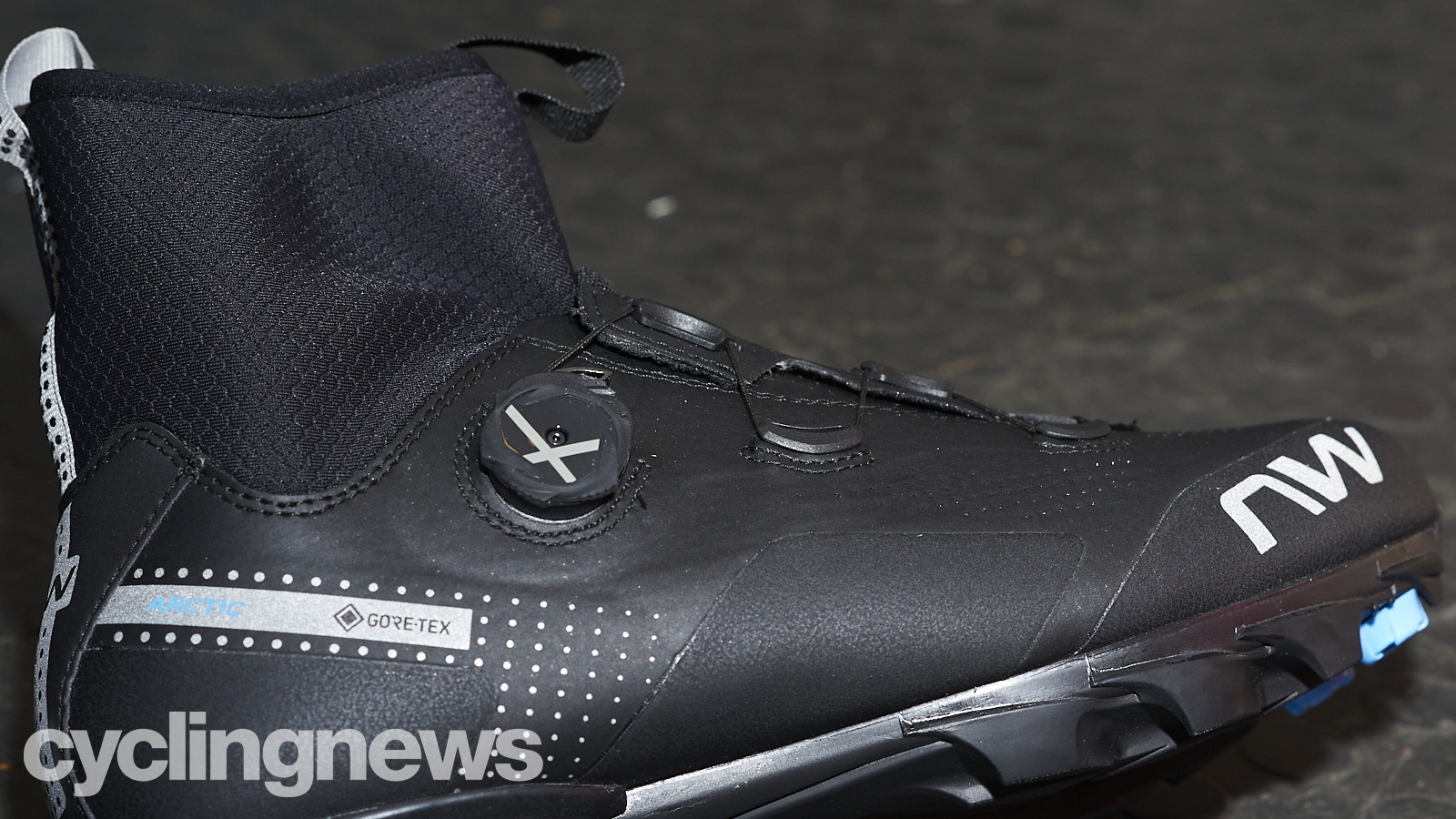
Performance
The fit and forget process of putting the Northwaves on is appealing in many ways, as, apart from how many revolutions it takes to tighten the SLW2 dial, they are extremely simple. Less opening and closing parts should mean fewer places for cold and damp to seep in, and for dirt to secrete itself.
As on their road cousins, the Easyfit Climaflex collar opening is of a fixed size, and can’t be adjusted. It does fit close to the leg (how close will depend on the circumference of your lower legs), but it doesn’t touch everywhere. Its reinforced front and rear loop anchor strips stiffen the collar sufficiently to ensure it stands up, but once on, it has more than enough flexibility to allow unimpeded movement of your ankle, and you’re barely aware of its presence either. Compared to boots which feel more akin to a conventional walking boot in how they press against the shin, the Arctic GTX has a very light touch.
However, the limited elastic effect of the collar’s opening, which prevents it from squeezing the leg, also allows there to be a gap that shifts from front to rear during each pedal revolution. On the road, where the relative position of boot and leg alters very little, I found the spray and cold air ingress noticeable enough to cause minor annoyance. But when riding the XC Arctic GTX boots off-road, the increased all-round activity level meant I wasn’t aware of the same issue. My speeds were generally lower, but the amount of mud and water sprayed over my feet was far higher.
Amongst local training rides on and off-road, I’ve been using these Northwaves for my warm-up laps before cyclo-cross races. Race shoes aren’t especially warm or protective, so I prefer to keep my socks dry and feet warm until nearer the race. It’s been a wet and muddy season, one of the muddiest for a while, and the Arctic GTX has done a fine job of keeping my feet comfortable, even in the mud soup experienced before the recent National Championships.
The rubber sole has aggressively angled tread blocks along the sides, with shallower ones at the toe, and a couple of removable plastic studs which can be replaced by taller studs, or spikes for more toe grip. During testing, I used the boots as supplied, and managed every ankle-deep run-up, off-camber clamber and dismount/remount without any major grip problems. I’d probably fit some aluminium football studs to the front for winter grip when needed, but these would never be race shoes for me, so spikes would be overkill.
I found the room around my Time cleats to be adequate. My race shoes have more space for mud to be squeezed out of the way, rather than the tall pontoons used here, but in use, they performed well. The rubber tread continues backwards to cover most of the midsole, which is useful for grip when you miss the pedal, allowing you to get a couple of pedal strokes in before trying again.
Extending a little around the toe and heel, the Northwave’s rubber sole makes them a perfectly secure proposition when walking off the bike, and with little chance of scuffing the uppers. Although they don’t provide complete coverage of the lower portion of the uppers, the protective TPU sections wrap around the toe and heel, plus a panel on each side. Despite numerous missed pedals and foot dabs, I haven’t scuffed the uppers at all yet.
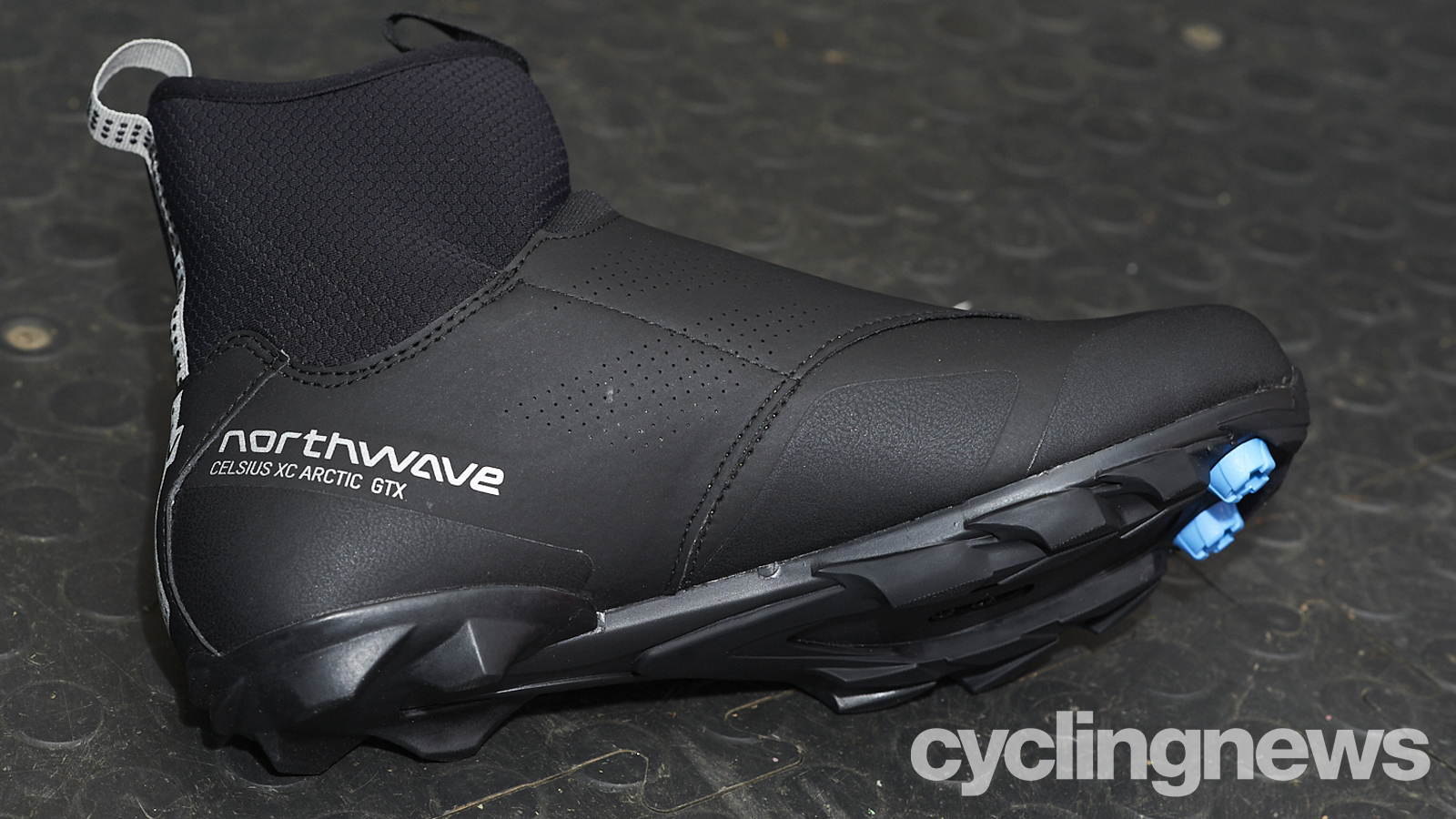
Following the muddiest course recons, the Northwaves have been jet washed clean, and even the sustained blast from a 180 bar petrol washer has failed to penetrate the uppers or collar. As ever, water will ultimately migrate down your leg and into your boots, but the amount was generally minimal, and the boots’ warmth was never compromised.
The sole is quite stiff, enough to ride at full power without feeling the pedal pushing against your foot, and it’s hard to detect any flex. I’ve certainly walked and run plenty in these boots too, and they aren’t too stiff for that, plus the supple collar makes it easy to forget you have boots on. With appropriate winter socks on, I haven’t felt they lacked warmth, even in temperatures of -5C/23F, and they only start to feel too warm to me at around 8C/46F. Of course, every rider will feel cold and generate warmth to a different degree, but there’s scope to adapt these boots to match your personal preference.
Verdict
Despite being essentially the same boots as the Celsius R Arctic GTX, I found that I much preferred them in their Celsius XC Arctic GTX guise. I think the differing style of riding better suits their design, and the slim ankle collar is even more useful for it. Allowing for the fact that no winter boot will be impervious to eventual water ingress, the Celsius XC Arctic GTX does a fine job of keeping water and muck at bay, while allowing great freedom and security, whether on or off the bike.
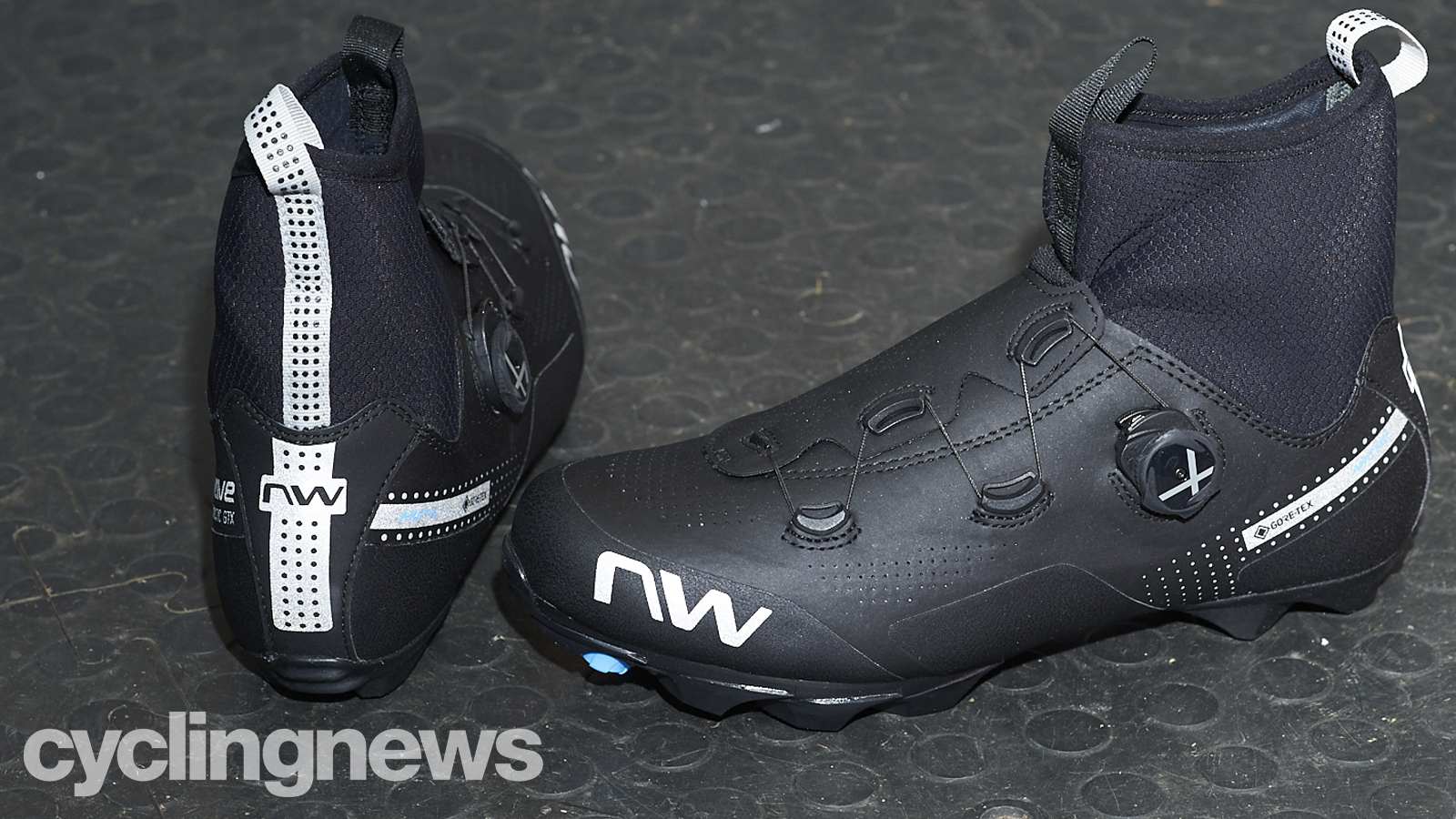
Should I buy the Northwave Celsius XC Arctic GTX?
Buy it if:
- You want a quick-fitting boot for off-road or commuting use
- Great warmth is important
- You prefer a shoe-like feel
Don’t buy it if:
- You’d prefer an adjustable ankle closure
- Pulling these boots on sounds unnecessarily tough
Tech Specs: Northwave Celsius XC Arctic GTX
- Price: £215.04 / $304.30 / €249.99
- Available colours: Black, Grey, Yellow
- Upper: Microfibre with waterproof Gore-Tex membrane, TPU reinforcement
- Outsole: JAWS Carbon Reinforced sole, natural rubber tread
- Closure: SLW2 closure system
- Weight: 931g (pair, size 45)
- Size availability: 37-49, half sizes from 39.5-45.5
